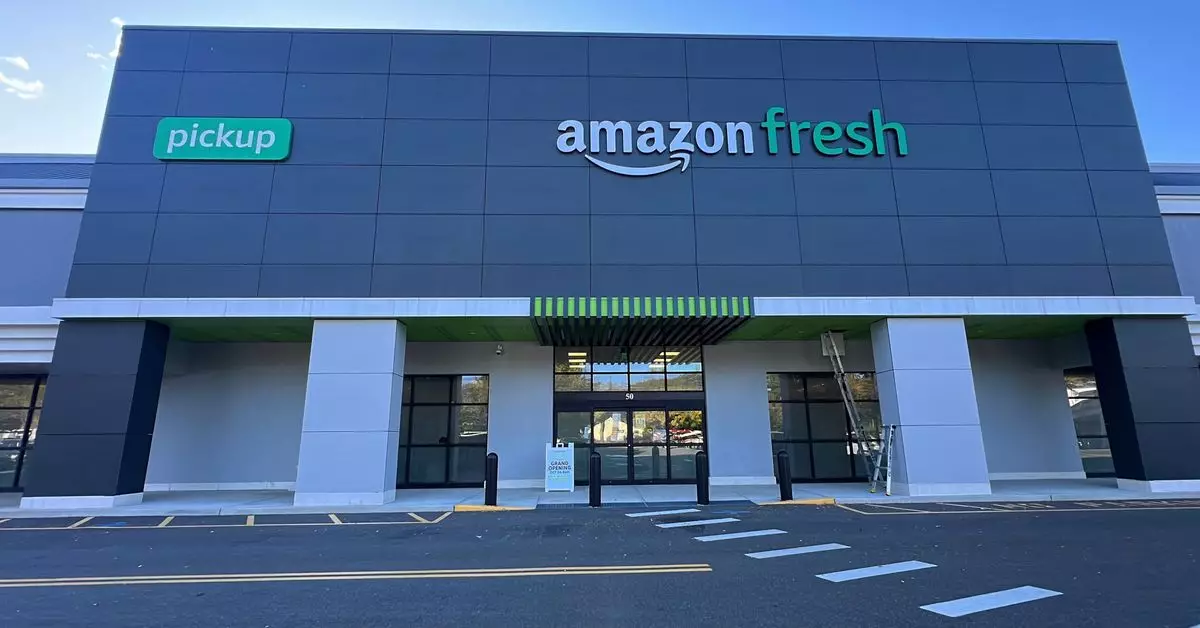Amazon is taking bold steps to redefine its grocery operations, merging the offerings of Whole Foods and Amazon Fresh in innovative ways. This strategy could significantly enhance consumer convenience by integrating fulfillment centers and product lines from both brands. According to insights from The Wall Street Journal, the e-commerce titan has initiated shipments of Whole Foods products from 26 existing Amazon Fresh fulfillment centers, a move that showcases its ambition to streamline grocery shopping processes for customers. This integration is not merely logistical; it signals a fundamental rethinking of how Amazon can position itself against formidable competitors like Walmart and Kroger.
Central to Amazon’s forward-thinking plan is the establishment of a micro-fulfillment center at a Whole Foods Market in Pennsylvania. This facility symbolizes Amazon’s commitment to optimizing grocery distribution, allowing for both Amazon Fresh household goods and groceries to be stocked in the same location. Such micro-fulfillment centers could serve as a testbed for Amazon’s ability to operate more efficiently in urban settings, where space is at a premium and rapid delivery is increasingly expected by consumers. This micro-approach not only aims to reduce delivery times but also to elevate the overall shopping experience by making a wider variety of products available under one roof.
Expanding Product Offerings
Another noteworthy experiment in Amazon’s grocery strategy is the introduction of “Amazon Grocery” within select Whole Foods locations, including one in Chicago. This initiative offers products that typically wouldn’t align with Whole Foods’ upscale reputation, providing an eclectic mix that ranges from organic produce to Tide detergent and Cheez-It crackers. The aim here is clear: to cater to a broader audience and facilitate one-stop shopping for consumers who wish to purchase a diverse range of items without needing to venture into multiple stores. By leveraging Whole Foods’ premium brand alongside Amazon Fresh’s expansive inventory, the company hopes to capture a larger share of the grocery market.
Attuning to Consumer Preferences
These innovative tactics are part of Amazon’s broader strategy to enhance customer engagement and satisfaction. In an increasingly competitive landscape, where established grocery chains have leveraged their physical presence to maintain dominance, Amazon’s ability to adapt its business model is crucial. Other recent initiatives, such as the expansion of its unlimited grocery subscription service and the introduction of “Dash Carts,” which allow shoppers to scan items as they shop, showcase Amazon’s commitment to reimagining the grocery shopping experience.
Despite these ambitious initiatives, Amazon has also had to recalibrate its grocery strategy by scaling back on certain projects, such as the Just Walk Out technology and the closing of its drive-up grocery stores. This pivot highlights the challenges that come with such rapid evolution in a field as entrenched as grocery retail. However, through trial and error, Amazon is learning valuable lessons that shape its ongoing approach to grocery distribution and customer satisfaction.
In the quest to enhance its grocery business, Amazon is setting the stage for a significant transformation in how consumers interact with brands in the retail space. The blending of Whole Foods and Amazon Fresh can potentially redefine convenience, making grocery shopping easier, faster, and more diverse for customers everywhere.

